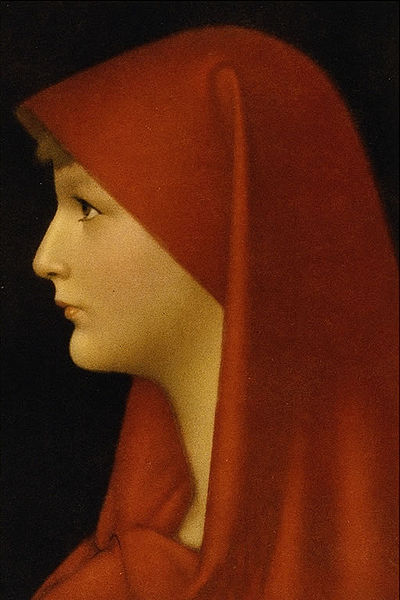Fabiola, known in Italian and Spanish as Santa Fabiola, was a physician and Roman matron of rank of the company of noble Roman women who, under the influence of the Church father Jerome, gave up all earthly pleasures and devoted herself to the practice of Christian asceticism and charitable work.
Copy of Henner's portrait of St. Fabiola.
Fabiola and Syra, 1859, by Amanda Fougère, painting inspired by Wiseman's novel
The gens Fabia was one of the most ancient patrician families at ancient Rome. The gens played a prominent part in history soon after the establishment of the Republic, and three brothers were invested with seven successive consulships, from 485 to 479 BC, thereby cementing the high repute of the family. Overall, the Fabii received 45 consulships during the Republic. The house derived its greatest lustre from the patriotic courage and tragic fate of the 306 Fabii in the Battle of the Cremera, 477 BC. But the Fabii were not distinguished as warriors alone; several members of the gens were also important in the history of Roman literature and the arts.
Statue of Quintus Fabius Maximus Verrucosus, made between 1773–1780 for Schönbrunn Palace, Vienna.
The Capitoline Wolf with Romulus and Remus. One legend holds that their respective followers were called the Quinctilii and the Fabii.
Denarius of Gaius Fabius Hadrianus, 102 BC. On the obverse is the head of Cybele, a possible allusion to the visit to Rome of Battaces, a priest of Magna Mater. The reverse depicts Victoria driving a biga, with a flamingo below.
Coin of one of the Fabii Maximi, minted during the reign of Augustus






